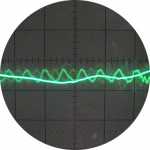The good, the bad and the not that great – my heat pump installation
Hi semi new to the group and been on my Heat Pump journey since mid/end of 2023.
Whilst my system works and heats our property and provides hot water it's not exactly a neat install or very well executed installation in places.
That being said I am no professional but have done a serious amount of read up.
Sadly I wasn't available on the week/days of the instal so it got put in without me being there.
Below are a list of the issues I am having to deal with now the installers have left and they are unwilling to do anything about without me paying to sort it and after paying the best part of £4000 (plus the £7500 grant) I'm not that keen on doing this as I don't believe it's for me to pay to sort their work out but I'm just a humble home owner 😅.
Buffer tank in loft mounted to a ply board is loud as it rests on joists and uprights reverberates through the ceilings. The circulation pump is floating next to it which also generates some noise. (Picture attached)
Outside pipework is a bit scrappy looking and could be a lot better orientated. The pipe work from the outside unit to indoors through the wall was only partly insulated, then concrete/mortar used to fill the hole left and not sleeved to protect it, I did see them do this and questioned it but they said it's fine...
Also after install I see a fair few runs of old copper and plastic left still on the system which was meant to the changed as per the quote but they also are unwilling to do this.
Even had a MCS audit which was very basic and I don't think fit for purpose.
I am now probably going to have to go through various avenues to try and get these issues sorted before I have to think about getting another company in to solve the problems.
Funny thing is I was going to go with Octopus but thought I'd try and use a local company as it seemed like the right thing to do 😅
Hi @burtis and thanks for posting a photo.
That's very informative and I think we'll be asking for more as this saga proceeds.
1: That buffer tank isn't properly supported.
It is labelled as having 50-litres capacity, and I expect the tank itself weighs around 50Kg.
So that cross beam has a good 100Kg resting on it, off-centre.
The cylinder is being held upright due to the copper pipes on the left exerting a pull-force...
... and yet too have no visible support in the picture.
I would think that's a breach of Health and Safety regulations.
2: A Heat Pump installation must also comply with Building Regulations.
On this Forum I usually observe breaches of Part-L, which is the Approved Document covering Conservation of Fuel and Power.
In your case I'm suspicious that there's non-compliance of Part-A, which covers Structural issues.
Every beam, joist etc in a building has a defined load which it's permitted to carry.
We don't yet know how that centre beam is supported from the floor below, but that's where I'd be looking next if I were on-site.
From what I can see, it looks like that centre-beam is intended to act as a 'tie'.
It runs across the ceiling joists to prevent them twisting or pulling apart, which would crack the ceiling below.
Those ceiling joists are held on the wall-plates at each end.
The wall plates are typically 100x50mm (4x2 inch) and run along the top of the inner leaf.
The rafters are also supported by the wall plates at each end.
That means the ceiling joists span the entire width of the house between the wall plates.
Ceiling joists and tie beams are typically 75x50mm (3x2) which isn't sufficient to support a person...
... nor a buffer tank!
In some houses there is an additional supporting wall below the ceiling joists.
That halves their span, allowing additional weight to be supported.
However:
a: that mid-way supporting wall may just be timber with plasterboard each side.
Without additional diagonal bracing, it isn't regarded as a structural element, and should not be weight-bearing.
b: A mid-way supporting wall may not go all the way below the ground floor to foundations.
It too wouldn't be counted as a weight-bearing element within the building's design.
So, given that basic overview of the anatomy of a building, are you now able to tell us what is below those ceiling joists, and whether it's structural in design?
3: How is it that you're stating the buffer tank is 'mounted' to the (vertical) ply board behind it?
Does it have integral brackets behind it?
Or is it 'mounted' by virtue of the pipework having nylon clips screwed into the ply?
Save energy... recycle electrons!
Thank you for your excellent break down of information this has blown my mind I will definitely get in and rummage deeper into what you have said and come back with some more answers or questions 😄
Many thanks speak tomorrow
I really don't want to be blowing your mind @burtis 😱
but there's a lot more to getting a heat pump installation correct than just the arrangement of pipes.
I'm starting with the mechanical structure of what I can see in your photo because there's a number of 'issues' which could give you leverage with the installer.
We need to identify aspects of the work which best provide you with the opportunity to get things put right.
What I'm describing here are matters which you could raise with a Buildings Surveyor, Building Control Officer or Citizens' Advice Bureau.
I'd also like to provide you with sufficient correct nouns for the conversation!
Otherwise this could get confusing.
Having had a closer look at the one photo you've already posted, it's clear to me that this is a Cut Roof.
The timbers have been cut on-site and joined together by a carpenter who knows what he's doing.
The main timbers we can see are a Truss.
In particular, it's a Post Truss, because there's a central upright timber below the ridge.
Usually a Post Truss looks more like the diagram on the left.
There may be several Webs on each side, depending on the overall span, and the weight of the roof above.
They are usually arranged to slope the other way, but that may not be relevant here.
In your case, the Top Chord is itself acting as a Rafter, as in the right diagram.
It isn't clear to me what your Purlins are doing.
I've never previously met Purlins connected to a Web rather than a Top Chord.
They're not even at the same angle as the Web strutts.
It's difficult for me to tell, but I think the Bottom Chord is higher than the other Ceiling Joists.
A Post Truss is a strong structural component of a building.
It looks like your installer has used the centre Post to which the sheet of ply is screwed.
However, it doesn't look as if the weight of the Buffer Tank is being transferred to that Truss.
Instead it's resting precariously on the Tie Beam running across the top of the Ceiling Joists.
We'd need to see a photo of what's between the Buffer Tank cylinder and the ply board to better understand what's happening.
Just so you know, I'm a self-builder with decades of hands-on experience across multiple 'trades'.
Although I do refer to the Building Control regulations and other safety legislation, the 'correct' approach is usually one of common sense.
You only need to reference the legislation when a worker seems to have ignored common sense...
... which is what I'm seeing with the Heat Pump Installer's work in your house.
Save energy... recycle electrons!
hi buddy,
Sadly I have nothing to compare bills to say if it's better than gas or similar system.
But hot water has been cheap to heat.
And the house will maintain any temperature I set it to. (I have been tweaking the weather comp to maintain a temp but with buffer and circulation pump at one speed I'm not sure how well I will be able to do this)
January 2024 was early days of me setting up the weather compensation at 45⁰ @ -5 and 35@ 15, this used 420 kWh which I don't think is terrible.
My system (Midea) is WiFi connected and has a app but it's pretty awful at recording the information the COPs are all over the place some days I says I used 10kWh but only 3 have been used other days it says 1kWh but 5 have been used, well not that ridiculous but it's still very vague and I'm not going to say accurate in the slightest.
@burtis - irrespective of how well you getting stuck in to the process of setting up the system, this should have been done by the installer.
Building Regs, Approved Document Part-L states:
Do you have a copy of the Commissioning Plan?
Are the items in the list signed off?
Moreover the installer is required to produce site-specific information (system diagrams etc) to facilitate you being able to operate and maintain the system after he's left:
Could you tell us what documentation you've been provided with?
Do you have a letter from your Local Planning Authority (LPA) to confirm that your installation complies with the Building Regulations?
Save energy... recycle electrons!
The installer just said set it to 50⁰ and leave thermostat on 21 no weather comp I had to set this up myself.
He said this because that's all MCS want to see.
The documents I have on paper are:
-Building Regulations Compliance Certificate (NAPIT)
-A Emmiters size sheet
-Commissioning check list
-Electrical installation Certificate
Soooo a bit more of a closer look.
The board behind the buffer is screwed to the upright.
Then the mounts on the back are screwed to the board so 4 wood screws holding that buffer up Ballanced on the edge of that beam. There is a brick wall below the beam though but this beam does not rest on that wall
- 26 Forums
- 2,396 Topics
- 54.3 K Posts
- 217 Online
- 6,077 Members
Join Us!
Worth Watching
Latest Posts
-
RE: Recommended home battery inverters + regulatory matters - help requested
The diagram below is a simplified view of the internals...
By Batpred , 8 hours ago
-
RE: Heat pump not reaching flow temperature
@davec Ive had a look at the screenshots. Lots of th...
By JamesPa , 8 hours ago
-
RE: Vaillant aroTherm not heating with many faults
When I had a series of apparently unrelated faults my i...
By JamesPa , 9 hours ago
-
RE: Considering MLCP (Multi-Layer Composite Pipe) for ASHP
OK, TBH I dont know enough about MLCP to comment with a...
By JamesPa , 11 hours ago
-
RE: Predicted Heat Loss from MCS calcs vs EPC vs actual
My gut feeling is that the heat pump is right sized. ...
By Tim441 , 12 hours ago
-

RE: Power outages and storms: A surprisingly good DNO experience
Agreed, which is no more nor less than a customer shoul...
By Majordennisbloodnok , 13 hours ago
-

RE: Running from backup generaor in powercut?
@batpred In our case, 3 times each day when the Octopus...
By Toodles , 14 hours ago
-
RE: Advice for a novice on Mitsubishi Ecodan 6kW
Hi @sheriff-fatman Cycling at 5C and below is usuall...
By RobS , 14 hours ago
-
RE: New Fogstar 15.5kWh upright solution
@batpred Here's the latest Fogstar ready built pack....
By Bash , 16 hours ago
-
RE: RDSAP10 effect on existing heat pump EPC rating?
@mike-patrick yes, even though the current system is ru...
By Tim441 , 16 hours ago
-
RE: Solis inverters S6-EH1P: pros and cons and battery options
Solis confirmed that the S6 works with a single battery...
By Batpred , 16 hours ago
-
RE: Who has a V2G EV installation
I am wondering if in any V2X, would the car battery eve...
By Batpred , 17 hours ago
-

RE: Setback savings - fact or fiction?
Yes, by calculating it manually from the minute data, w...
By cathodeRay , 18 hours ago
-
Fan unit Making terrible noise HELP!!
One of a pair of fan units on an Earth Save Classic II ...
By GutoFfowc , 19 hours ago
-
RE: New Mitsubishi Ecodan 11.2kW installation - L9 errors and maybe more
OK. I think your system, which seems well designed, is...
By JamesPa , 20 hours ago
-

RE: Heatpunk Floor plan issues
It's usually the complete opposite... seldom that Safar...
By Mars , 1 day ago
-

RE: Fan is clipping ice build up from the front of unit.
@majordennisbloodnok I’ll not go there thanks! Toodles.
By Toodles , 2 days ago
-
RE: Running my new Nibe ASHP efficiently
I'm new to the forum. Did you get a reply to this last ...
By Mike @ Camelot , 2 days ago
-

RE: ASHP Energy Consumption: Aira 12kW heat pump
@grantmethestrength MCS requirements for DHW capacity h...
By Toodles , 2 days ago













